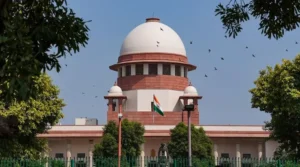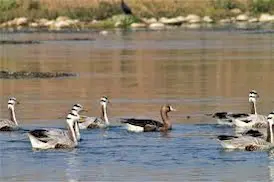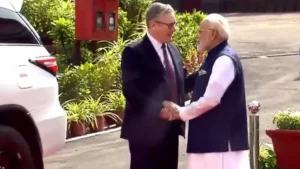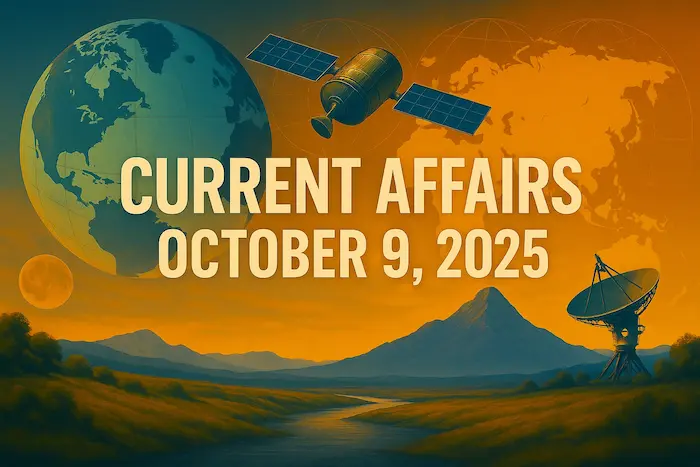1. Online National Drugs Licensing System (ONDLS) Portal – Governance

Why in News?
18 State Drug Control Authorities have adopted ONDLS for drug licensing.
Union Health Ministry reports non-compliance with CAPA guidelines by all 18 states.
Raises concerns over drug quality and regulatory enforcement.
What is ONDLS?
A centralized, digital, single-window platform for drug licensing.
Developed by CDAC (Centre for Development of Advanced Computing).
Aims to create a uniform and transparent licensing process across India.
Key Functions
Processes applications for:
Manufacturing & sales licenses
Blood bank certifications
COPP, GMP, WHO-GMP, Market Standing certificates
Ensures:
Uniform documentation requirements
Faster processing
Transparency & accountability
Issues: CAPA Non-Compliance
CAPA (Corrective and Preventive Action) ensures drug safety through:
Root cause analysis of failures
Implementation of corrective/preventive measures
States not following CAPA risk:
Substandard drug production
Regulatory failures
International export issues
Exam Connect – Possible Questions
Prelims
1. Which of the following statements are correct about ONDLS?
1.Developed by CDAC
2.Processes WHO-GMP certification
3.Applicable only to Union Territories
A. 1 and 2 only
B. 1 and 3 only
C. 2 and 3 only
D. 1, 2, and 3
Answer: A. 1 and 2 only
2. CAPA guidelines are primarily related to:
A. Effluent treatment in pharma units
B. Drug pricing policy
C. Drug quality assurance and manufacturing standards
D. Patient data privacy
Answer: C. Drug quality assurance and manufacturing standards
Mains
1. Discuss the significance of ONDLS in improving drug licensing transparency. Highlight key challenges in CAPA guideline compliance.
2. Evaluate the potential impact of ONDLS on Himachal Pradesh’s pharmaceutical sector, especially in the context of regulatory uniformity and global competitiveness.
2. PM Surya Ghar Muft Bijli Yojana (PMSGMBY) – Governance

Why in News?
As of September 2025, Public Sector Banks (PSBs) have sanctioned over 5.79 lakh loan applications worth ₹10,907 crore under the PM Surya Ghar Muft Bijli Yojana, indicating strong public participation and financial support for rooftop solar adoption.
Overview of the Scheme
Launched: 15 February 2024
Aim: To provide free electricity to households through the installation of rooftop solar panels.
Focus: Enhance household-level renewable energy generation and reduce power bills.
Key Objectives
Promote clean and sustainable energy at the domestic level.
Reduce dependence on grid electricity for households.
Support India’s commitment to renewable energy and reduce carbon footprint.
Encourage community-level participation in energy transition.
Subsidy Structure
60% subsidy for systems up to 2 kW.
40% subsidy for systems between 2 kW and 3 kW.
Subsidy cap: Based on unit size; exact limit set by implementing agencies.
Model Solar Villages
Each district will develop a Model Solar Village to showcase solar adoption.
Aims to create demonstration hubs for replication across rural and semi-urban areas.
Incentives for Local Bodies
Urban Local Bodies (ULBs) and Panchayati Raj Institutions (PRIs) will receive ₹1,000 per rooftop solar installation within their jurisdiction.
Encourages grassroots engagement and administrative support for wider adoption.
Eligibility Criteria
Must be an Indian citizen.
Household must:
Own a house with a suitable roof.
Have a valid electricity connection.
Not have received any prior solar subsidy.
Implementation Framework
National Level: Implemented by the National Programme Implementation Agency (NPIA).
State Level: Executed by State Implementation Agencies (SIAs) – primarily the Distribution Companies (DISCOMs).
DISCOMs’ Role:
Facilitate net metering.
Ensure timely inspections and commissioning.
Receive performance-based incentives for added rooftop capacity beyond baseline.
Exam Connect – Possible Questions
Prelims
1. Under the PM Surya Ghar Muft Bijli Yojana, what is the subsidy offered for solar systems up to 2 kW capacity?
A. 100%
B. 80%
C. 60%
D. 40%
Answer: C. 60%
2. Which of the following entities is primarily responsible for implementing the PM Surya Ghar Muft Bijli Yojana at the state level?
A. Panchayati Raj Institutions (PRIs)
B. Urban Local Bodies (ULBs)
C. Distribution Companies (DISCOMs)
D. Renewable Energy Development Authorities
Answer: C. Distribution Companies (DISCOMs)
Mains
1. Discuss the significance of the PM Surya Ghar Muft Bijli Yojana in promoting inclusive renewable energy access and grassroots-level climate action in India.
2. How does the implementation mechanism of the PM Surya Ghar Muft Bijli Yojana reflect the principles of cooperative federalism and decentralized governance?
3. Supreme Court Upholds Property Inheritance Rights for Gond Tribal Women – Polity

Why in News?
On July 17, 2025, the Supreme Court of India upheld the right of women from the Gond Scheduled Tribe to inherit ancestral property, even in the absence of explicit tribal customs permitting such inheritance—marking a significant step for gender justice and tribal rights.
Background of the Case
Gond women filed a claim to inherit their maternal grandfather’s ancestral property.
Lower courts rejected the claim, citing the lack of tribal custom allowing inheritance by women.
The women were asked to prove that such a custom existed, placing the burden of proof on them.
Supreme Court’s Key Observations
A Bench of Justices Sanjay Karol and Joymalya Bagchi ruled in favour of the women.
Held that constitutional principles of equality override discriminatory customary practices, unless such customs are proven, valid, and reasonable.
Burden of proof lies on the party claiming exclusion, not the one asserting equality.
Highlighted the need for judicial decisions to be grounded in justice, equity, and good conscience.
Legal & Constitutional Context
Hindu Succession Act, 1956 – Section 2(2):
Excludes Scheduled Tribes unless the Act is specifically extended to them.
In this case, no specific notification exists to exclude Gond women.
Hindu Succession (Amendment) Act, 2005:
Cited to reflect the legislative intent for gender equality in inheritance, though not directly applicable here.
Constitutional Provisions Invoked
| Article | Provision | Relevance |
|---|---|---|
| Article 14 | Equality before law | Denial of inheritance to women lacks rational basis |
| Article 15(1) | Prohibits discrimination on grounds of sex | Male-only inheritance is discriminatory |
| Article 38 | State to eliminate inequalities in status | Reinforces need for gender equality |
| Article 46 | Protection of SCs and STs from exploitation | Exclusionary customs exploit tribal women |
Conflict Between Constitution & Customary Law
Tribal communities enjoy a degree of autonomy under Fifth and Sixth Schedules.
However, customary laws must not override fundamental rights.
The Court emphasized that constitutional morality and gender justice must prevail when customs are unproven or discriminatory.
Precedent and Judicial Shift
Diverged from Madhu Kishwar v. State of Bihar (1996), which upheld male-only inheritance based on tribal customs.
The 2025 ruling is a progressive shift, asserting that unverified or unjust customs cannot override constitutional guarantees.
Exam Connect – Possible Questions
Prelims
1. Which of the following Articles of the Indian Constitution was cited in the 2025 Supreme Court judgment upholding inheritance rights for Gond tribal women?
A. Article 19
B. Article 29
C. Article 14
D. Article 370
Answer: C. Article 14
2. The 2025 Supreme Court ruling diverged from which earlier case that upheld male-only inheritance among Scheduled Tribes?
A. Shah Bano Case
B. Kesavananda Bharati Case
C. Madhu Kishwar v. State of Bihar
D. Olga Tellis Case
Answer: C. Madhu Kishwar v. State of Bihar
Mains
1. Discuss the significance of the Supreme Court’s 2025 ruling on property inheritance rights for Gond tribal women. How does it reconcile constitutional equality with tribal autonomy?
2. Do you think customary laws should override fundamental rights in matters related to personal laws among Scheduled Tribes? Critically evaluate with reference to recent judicial developments.
4. Nangal Wildlife Sanctuary – Environment

Why in News?
In March 2025, nearly 100 wild boars were found dead in the Nangal Wildlife Sanctuary. Postmortem reports indicate the likely cause was toxic industrial waste contamination in Nangal Lake, raising concerns over environmental safety and wildlife health.
Location and Background
Situated in the Rupnagar district of Punjab, in the foothills of the Shivalik range.
Declared a Wildlife Sanctuary in 2009.
Designated as a Ramsar Wetland Site in 2019, recognizing its global ecological significance.
Nangal Lake & Bhakra-Nangal Project
Nangal Lake is a man-made reservoir, formed as part of the Bhakra-Nangal hydropower project (commissioned in 1961).
The sanctuary lies within the larger Nangal Wetland system.
Nangal Wetland is one of the most important freshwater wetlands in northwestern India.
Ecological Significance
Supports over 150 bird species, including migratory and resident birds.
Hosts threatened species such as:
Indian pangolin
Egyptian vulture
Leopard
Serves as an important migratory stopover for waterfowl and other wetland-dependent species.
Historical Importance
The site gained diplomatic importance in 1954, when Indian PM Jawaharlal Nehru and Chinese PM Zhou Enlai announced the Five Principles of Peaceful Coexistence (Panchsheel) at Nangal.
Current Environmental Challenge
The mass death of wild boars suggests severe water pollution, likely due to toxic industrial effluents entering Nangal Lake.
Raises alarm over:
Pollution control lapses
Weak implementation of environmental regulations
Lack of ecological monitoring in protected areas
Conservation Implications
Incident highlights the conflict between industrial activity and ecological protection.
Reinforces the need for:
Stronger pollution regulation near wetlands
Regular monitoring of water quality and wildlife health
Coordinated action between Pollution Control Boards, Forest Departments, and Local Industries
Exam Connect – Possible Questions
Prelims
1. Nangal Wildlife Sanctuary is located in which of the following states?
A. Himachal Pradesh
B. Punjab
C. Haryana
D. Uttarakhand
Answer: B. Punjab
2. Which of the following statements about Nangal Wildlife Sanctuary is correct?
A. It is a natural lake formed in the Himalayan foothills.
B. It was designated a Ramsar site in 2009.
C. It is part of the Bhakra-Nangal Project and supports migratory birds.
D. It is located in the Great Himalayan National Park.
Answer: C. It is part of the Bhakra-Nangal Project and supports migratory birds.
Mains
1. The Nangal Wildlife Sanctuary incident highlights the threat posed by industrial pollution to wetland ecosystems. Discuss the ecological importance of wetlands and suggest measures to strengthen their protection.
2. How can India reconcile its developmental priorities with environmental protection in ecologically sensitive zones like Ramsar wetlands? Use recent examples to support your answer.
5. India–UK Ties Rebooted: Keir Starmer’s Visit and the Vision 2035 Roadmap – International Relations

Why in News?
British Prime Minister Keir Starmer visited India on October 8–9, 2025, in his first official bilateral tour, marking a key moment in India–UK strategic relations. This visit reciprocates PM Modi’s earlier visit to the UK and strengthens momentum toward a deeper, future-oriented partnership.
Significance of the Visit
Occurs amidst global geopolitical realignments, post-Brexit economic recalibration, and new trade challenges (e.g., US tariffs, EU CBAM).
Aims to reset ties and implement a “Vision 2035” roadmap for long-term cooperation.
Key Agreements and Initiatives
Comprehensive Economic and Trade Agreement (CETA)
A proposed free trade agreement aimed at:
Enhancing bilateral trade to £90 billion ($120 billion) by 2030.
Increasing annual trade by £25.5 billion.
Key focus sectors:
Textiles, engineering goods, chemicals from India
Boosts to UK services, education, and finance industries
Vision 2035 Roadmap
A long-term strategic framework covering:
Trade & Investment
Defence & Security
Science & Technology
Climate Change & Sustainability
Education & Mobility
Strategic and Geopolitical Cooperation
Defence Ties:
Joint military exercise: Konkan 2025 (naval cooperation)
Focus on co-production and co-development in defense manufacturing
Enhanced defense consultations and technology partnerships
Multilateral Collaborations:
One Sun One World One Grid (OSOWOG): Joint work on global solar energy networks
Coalition for Disaster Resilient Infrastructure (CDRI): Promoting resilient infrastructure in climate-vulnerable nations
Technology & Innovation:
Collaboration on fintech innovations
Active participation in the 6th Global Fintech Fest, Mumbai
Trade and Economic Relevance
India–UK CETA could diversify India’s export markets amid:
US tariff hikes
EU’s Carbon Border Adjustment Mechanism (CBAM)
Aims to promote inclusive growth, investment flows, and supply chain resilience
Education & People-to-People Ties
Enhanced student and professional mobility
Focus on mutual recognition of qualifications
UK to support Indian students in STEM and higher education sectors
Exam Connect – Possible Questions
Prelims
1. The “Vision 2035 Roadmap,” recently in the news, is related to India’s bilateral engagement with which of the following countries?
A. France
B. United Kingdom
C. Japan
D. United States
Answer: B. United Kingdom
2. Which of the following joint military exercises is held between India and the United Kingdom?
A. Indra
B. Garuda
C. Konkan
D. Malabar
Answer: C. Konkan
Mains
1. Critically examine the strategic importance of the India–UK Vision 2035 roadmap in the context of changing global trade and geopolitical dynamics.
2. How does the Comprehensive Economic and Trade Agreement (CETA) between India and the UK complement India’s broader economic and strategic interests?
6. Indian Capital Must Refocus on Domestic Investment – Economy
Why in News?
Experts are urging Indian private capital to redirect focus towards domestic investments, emphasizing the need for self-reliant and inclusive economic growth in the face of global uncertainties, disrupted supply chains, and geopolitical tensions.
Current Investment Trends
Public investment has grown rapidly:
From ₹3.4 lakh crore (FY20) to ₹10.2 lakh crore (FY25).
Growth rate: 25% annually.
Private investment, in contrast, has stagnated:
Remains around 22–23% of GDP, despite robust corporate profits.
Why Refocus on Domestic Investment?
1. Reviving Internal Demand
Real wages have stagnated, despite high corporate profits.
Weak wage growth → low household consumption.
Stronger domestic demand is essential for sustainable GDP growth.
2. Job Creation and Inclusive Growth
Domestic investments, especially in labour-intensive sectors, are crucial for generating employment at scale.
Supports regional development and reduces economic disparity.
3. Boosting Innovation and Competitiveness
India’s R&D spending is just 0.64% of GDP, far below:
2–3% in developed countries like the US, Japan, South Korea.
Private sector participation in R&D is essential for long-term competitiveness in:
Digital economy
Green technologies
Advanced manufacturing
4. Utilizing Favourable Policy Conditions
Reforms and incentives supporting domestic investment:
Reduced corporate tax rate (22%)
PLI (Production Linked Incentive) schemes
Startup ecosystem and ease of doing business reforms
🧭 Policy and Governance Implications (GS3 Context)
| Area | Public Policy Relevance |
|---|---|
| Employment | Domestic investments can create large-scale, decentralized jobs |
| Innovation | Private R&D can drive technology and productivity gains |
| Manufacturing | Key to realizing Make in India and Atmanirbhar Bharat goals |
| Balanced Growth | Reinvestment in Tier 2/3 cities fosters regional equity |
Challenges Hindering Private Investment
High risk aversion in uncertain global climate
Focus on financial assets over productive investment
Supply chain uncertainties and lack of skilled labour in certain sectors
Credit access issues for MSMEs and new industries
Way Forward
Incentivize domestic reinvestment in productive sectors.
Link corporate incentives to employment and wage growth.
Encourage private participation in R&D, innovation hubs, and rural industrialization.
Align capital flows with national development priorities to ensure economic resilience.
Exam Connect – Possible Questions
Prelims
1. What is the approximate percentage of GDP currently attributed to private investment in India?
A. 15–16%
B. 18–19%
C. 22–23%
D. 25–26%
Answer: C. 22–23%
2. Which of the following best explains the need for increased private investment in R&D in India?
A. To meet WTO obligations
B. To reduce inflation
C. To enhance global competitiveness and innovation
D. To control fiscal deficit
Answer: C. To enhance global competitiveness and innovation
Mains
1. In the context of India’s economic goals, analyze the importance of redirecting private capital toward domestic investment. What policy measures are needed to facilitate this shift?
2. Stagnant private investment alongside rising public investment presents both challenges and opportunities. Discuss the implications for inclusive growth and innovation in India.

